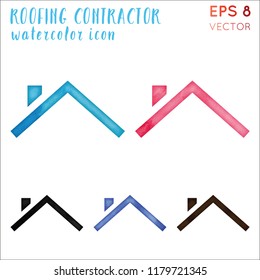The Success Of Your Commercial Outside Paint Project Is Considerably Affected By Weather-- Comprehend Exactly How It Can Determine The Result Of Your Efforts
The Success Of Your Commercial Outside Paint Project Is Considerably Affected By Weather-- Comprehend Exactly How It Can Determine The Result Of Your Efforts
Blog Article
Short Article Writer-Duke Dohn
When you're planning an industrial exterior painting job, don't take too lightly the effect of weather on your results. You require to consider aspects like temperature, moisture, and precipitation, as they can make or break your paint work. For example, did you recognize that optimal problems require particular temperature level ranges and moisture degrees? Failing to monitor these aspects can result in unequal coatings and even damage to fresh paint. Comprehending these elements is crucial to accomplishing a resilient, specialist end result. So, what certain weather conditions should you be wary of?
Temperature level Considerations
When it concerns commercial external paint, temperature level plays a crucial role in the result of your job. If you're painting in extreme heat, the paint can dry out too rapidly, leading to problems like bad adhesion and irregular coatings. You want to go for temperature levels in between 50 ° F and 85 ° F for the very best results. Below 50 ° F, paint may not heal appropriately, while over 85 ° F, you run the risk of blistering and breaking.
Timing your job with the appropriate temperatures is crucial. Begin your job early in the early morning or later in the mid-day when it's cooler, specifically throughout warm months.
Also, consider the surface area temperature; it can be significantly greater than the air temperature, specifically on bright days. Use a surface area thermostat to examine this prior to you begin.
If temperature levels are uncertain, keep an eye on the weather forecast. Sudden temperature level drops or heat waves can derail your strategies. https://interiorhousepaintersnear86542.theobloggers.com/39496445/from-idea-to-production-recognizing-pinterest-inspired-painted-interiors do not want to start painting only to have the conditions alter mid-project.
Humidity Degrees
Moisture degrees dramatically impact the success of your industrial exterior paint project. When the moisture is too expensive, it can impede paint drying and healing, resulting in a variety of issues like inadequate attachment and end up quality.
If you're preparing a work during wet problems, you may discover that the paint takes longer to completely dry, which can extend your job timeline and rise expenses.
On the other hand, low humidity can additionally position difficulties. Paint may dry out as well promptly, stopping correct application and resulting in an irregular finish.
https://travispygpy.webbuzzfeed.com/33784535/pro-tips-for-achieving-clean-lines-and-expert-outcomes-when-repainting-your-insides 'll intend to monitor the moisture degrees very closely to guarantee you're functioning within the ideal variety, commonly between 40% and 70%.
To get the most effective results, take into consideration making use of a hygrometer to determine moisture prior to beginning your project.
If you discover the levels are outside the optimal array, you may need to readjust your routine or select paints created for variable conditions.
Constantly speak with the maker's standards for specific recommendations on humidity tolerance.
Precipitation Effect
Rainfall or snow can significantly interrupt your commercial outside paint plans. When precipitation occurs, it can wash away newly applied paint or produce an uneven coating. Ideally, arrowhead company want to pick days with completely dry weather to ensure the paint adheres properly and treatments properly. If you're captured in a rain shower, it's ideal to stop the project and wait for conditions to improve.
Moreover, snow can be a lot more destructive. Not just does it produce a damp surface, yet it can additionally lower temperature levels, making it hard for paint to completely dry. This can lead to problems like peeling off or blistering down the line.
It's critical to check the weather report prior to beginning your task. If rainfall or snow is predicted, think about rescheduling.
Always bear in mind to enable adequate drying out time in between layers, especially if the weather condition stays uncertain.
Verdict
Finally, watching on the weather condition is necessary for a successful commercial external painting task. By keeping track of temperature level, humidity, and precipitation, you can ensure the very best problems for application and healing. Bear in mind to prepare your work around desirable weather condition and constantly adhere to supplier standards. With the appropriate strategy, you'll achieve a resilient, stunning surface that can hold up against the components. Do not let the weather condition catch you off-guard-- stay informed and paint clever!
